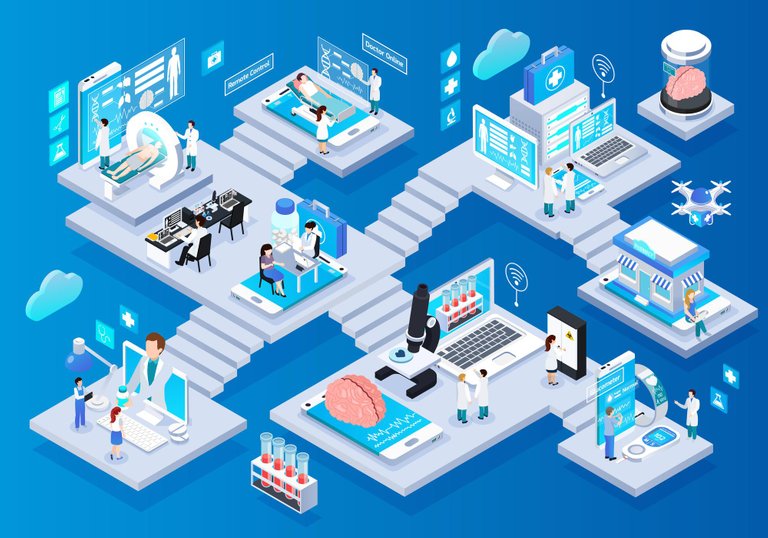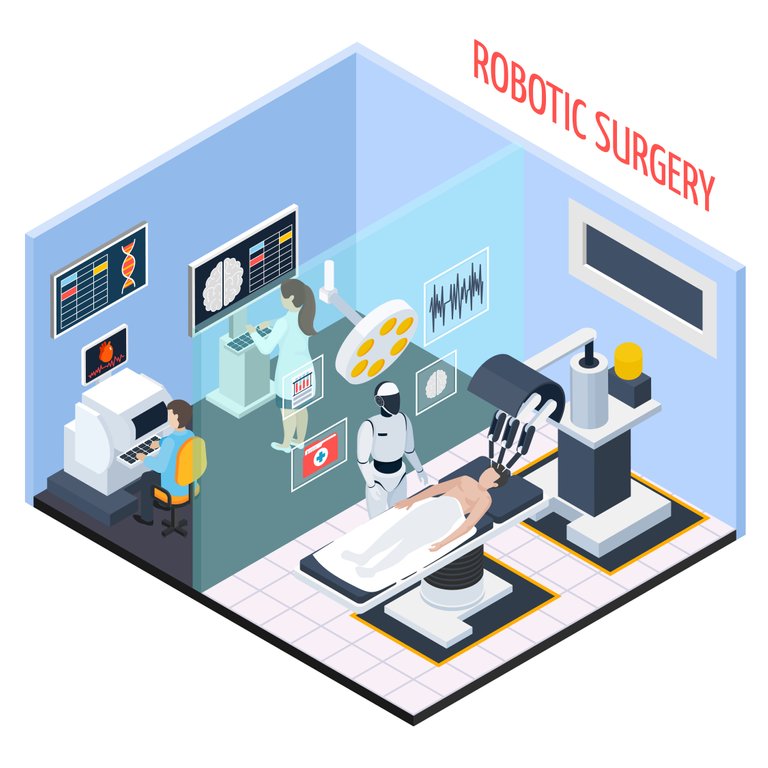
The field of healthcare has always been one that relies heavily on human interaction and intuition. Nevertheless, with the advancements in technology and the revolution of digital transformation, AI and robots used in everyday life are no longer the stuff of science fiction. The applications of robots and artificial intelligence (AI) have begun to make their way into hospitals around the world.
Hospitals are beginning to recognize the potential of this technology and its
ability to provide more efficient and accurate care, thus making hospitals safer for both patients and healthcare providers. While some may fear that this may lead to job loss, the truth is that robots and AI can significantly benefit healthcare providers and patients alike. In this post, we will discuss how robots and artificial intelligence can improve the efficiency and effectiveness of hospitals while also helping healthcare professionals to better serve their patients.
Current Common Applications of Robots and Artificial Intelligence in Hospitals

Robotic Surgery
One vital technology in the healthcare industry is robotic surgery. Robotic surgery is a type of surgical technique that uses robots to perform surgical procedures. The robot performs the operation under the surgeon's guidance. This technology allows surgeons to perform complicated procedures with greater precision and minimal risks.
The benefits of robotic surgery are clear. Robotic surgery is less invasive than traditional one. It allows the surgeon to make smaller incisions, resulting in less scarring, less pain, and faster recovery times.
Robotic surgery is particularly useful in removing cancerous tumors, as it allows the surgeon to remove the cancerous tissue while leaving healthy tissue intact. The robot can also be programmed to perform complex movements that would be difficult for human hands to perform. This precision makes robotic surgery ideal for delicate procedures, such as heart and brain surgeries.
Enhanced Patient Care
Artificial intelligence can also improve patient care in hospitals. AI-powered tools such as chatbots can help patients to get immediate responses to their questions, relieving the burden on hospital staff.
Smart beds equipped with pressure sensors can monitor a patient's movements and predict if the patient is at risk of developing bedsores. The bed can automatically adjust its settings to prevent bedsores from forming.
Wearable devices can monitor the patient's vital signs and alert caregivers in case of emergencies. This technology allows for early detection of health problems and faster intervention.
Robots for Sanitization
Hospitals are a haven for germs and bacteria, making cleanliness and sanitation one of the most critical factors in healthcare. Robotic cleaners can be used to sanitize hospital rooms, ensuring that they are free from germs and bacteria.
These robots use ultraviolet light to sanitize surfaces, killing germs and bacteria. They can also detect and avoid obstacles, ensuring that they don't collide with patients or objects in the room.
Robotic cleaners are particularly useful in operating rooms, where cleanliness and sanitation are paramount. They can clean the room thoroughly in a short amount of time, reducing the risk of infections and ensuring that the room is ready for the next procedure.
Efficient Medical Billing
The medical billing process is an intricate and time-consuming process that can cause headaches for hospital staff. Artificial intelligence can help streamline the process, making it more efficient and cost-effective.
AI-powered billing solutions can automatically analyze medical records and generate accurate bills. This technology speeds up the billing process, reducing the backlog of pending bills and allowing hospital administrators to focus on other critical tasks.
Improved Drug Administration
Drug administration is a critical part of patient care, and it requires precision and accuracy. Artificial intelligence can be used to improve drug administration in hospitals.
Smart pill dispensers can be used to dispense medications at the appropriate times, reducing the risk of errors and improving compliance. These dispensers can also track patient adherence, ensuring that patients take their medications as prescribed.
AI-powered devices can also be used to monitor patients for adverse drug reactions, alerting caregivers in case of emergencies. This technology allows for early detection of problems, improving patient outcomes and reducing the risk of complications.
Telemedicine
Telemedicine is a remote medical service that allows patients to consult with healthcare providers over the Internet. This technology is particularly useful in rural areas, where access to healthcare is limited.
Telemedicine enables patients to consult with doctors and specialists from the comfort of their homes, reducing the need for hospital visits. This technology makes healthcare more accessible to patients who live far away from hospitals or who have mobility issues.
Tangible Benefits of Robots and Artificial Intelligence in the Healthcare Sector

Increased Efficiency in Patient Care
One of the most critical benefits of robots and AI in healthcare is the potential for increased efficiency in patient care. Robots, for example, can help with tasks such as dispensing medications, tracking vital signs, and taking blood samples, freeing up healthcare professionals to focus on more complex tasks such as diagnosis and treatment. AI, on the other hand, can analyze patient data to identify trends, make predictions, and provide customized treatment plans based on a patient's specific needs.
Improved Accuracy in Medical Procedures
Robots and AI can also improve the accuracy of medical procedures. For example, surgical robots can perform minimally invasive procedures with more precision and control than human surgeons. Additionally, AI-powered medical imaging tools can help detect abnormalities that may be often missed by human eyes, leading to more accurate diagnoses and treatments.
Reduced Risk of Infection
Another benefit of robots and AI in healthcare is the reduced risk of infection. Robotic surgery, for example, can decrease the likelihood of surgical site infections by making smaller incisions and reducing the risk of human error. Similarly, robots can be used in the disinfection of hospital rooms, reducing the spread of harmful pathogens and bacteria.
Increased Accessibility for Patients
Robots and AI can also improve accessibility for patients by increasing the reach of healthcare providers. For patients in remote or under-served areas, telemedicine powered by AI can provide virtual consultations and remote monitoring, allowing patients to receive quality care regardless of their location. Additionally, robots can be used to deliver medication and supplies to patients who are unable to leave their beds.
Future Opportunities for Research and Development
Finally, the use of robots and AI in healthcare has the potential to lead to new opportunities for research and development. By collecting and analyzing large amounts of patient data, AI can help identify new treatment options and disease patterns, leading to breakthroughs in medical science. Similarly, robots can be used in the development of new medical devices and procedures, expanding the range of possibilities in healthcare.
As we have seen, the use of robots and artificial intelligence in healthcare has the potential to transform the field of medicine. From increased efficiency and accuracy to improved accessibility and infection control, robots and AI bring a wealth of benefits to hospitals and their patients. While there may be concerns about job loss and the potential for errors, the truth is that the use of these technologies can enhance the capabilities of healthcare professionals and lead to better patient outcomes. When we look at the future of the healthcare sector, it's clear that robots and AI will play an increasingly crucial role in delivering high-quality care to patients around the world.